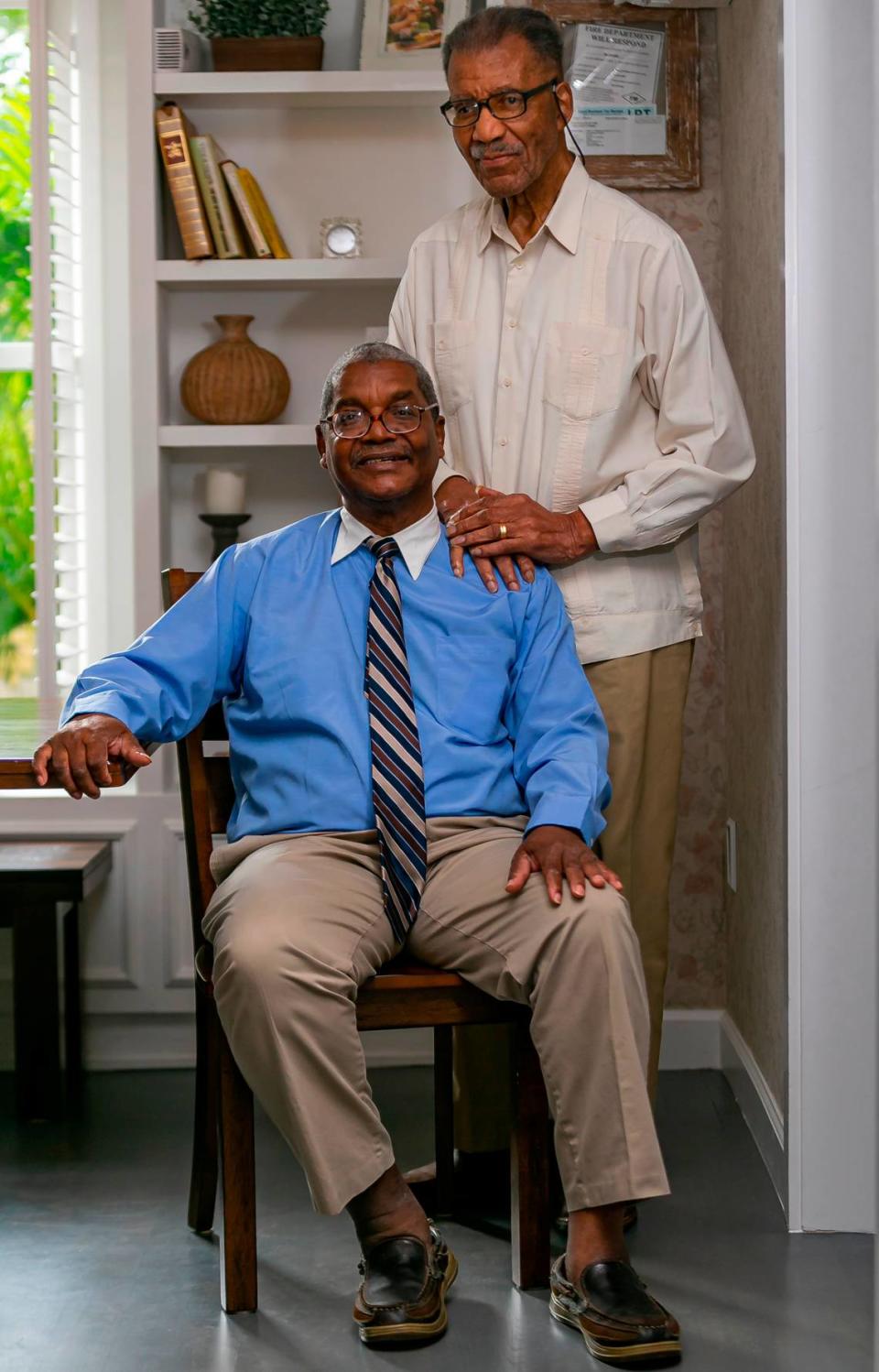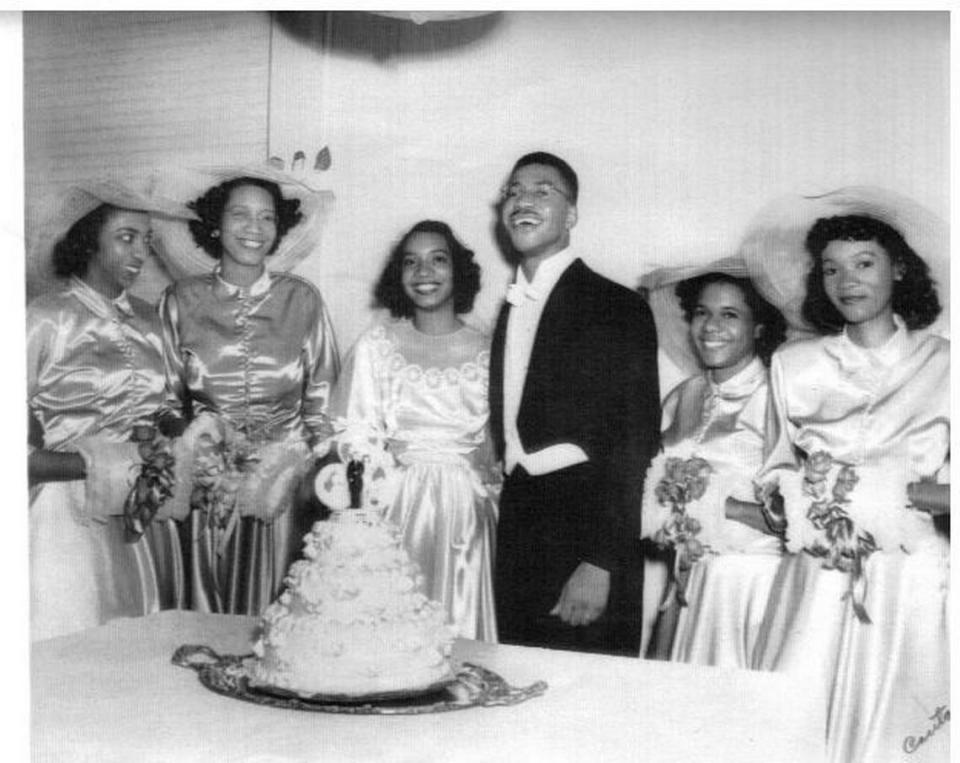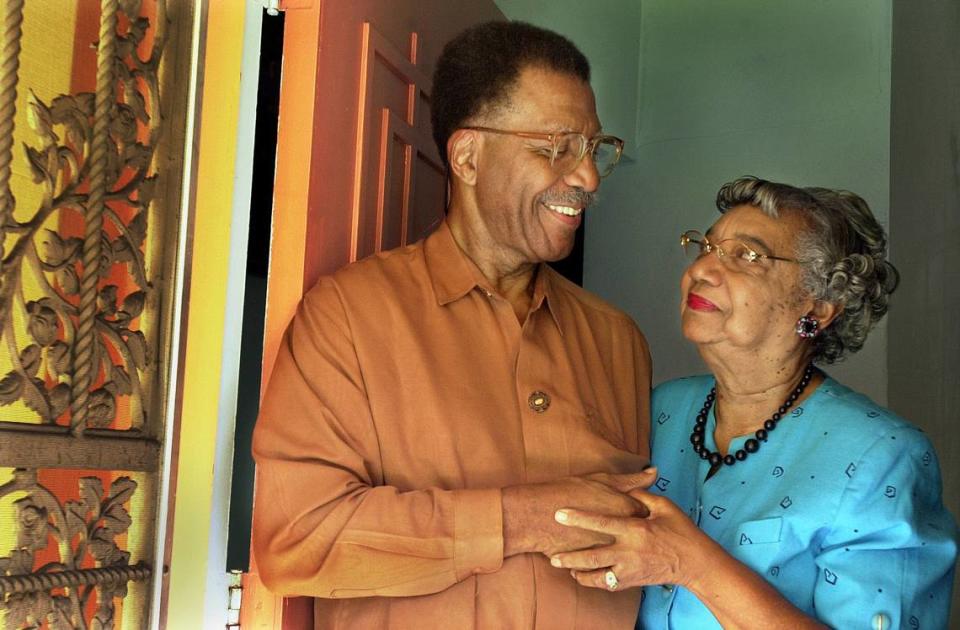Florida’s first Black surgeon, Civil Rights activist George A. Simpson dies at 98
- Oops!Something went wrong.Please try again later.
George Simpson Jr. was five years old when he realized his father was fearless.
The family was traveling to St. Louis and made a stop at a gas station somewhere in Mississippi because Simpson Jr. needed a restroom. A few “good ‘ole boys” hung outsideof the gas station and after they initially denied the junior Simpson use of the facilities, George A. Simpson showed them he meant business.
“My father showed his gun and said ‘Look we don’t want any trouble but if there’s going to be trouble and I shoot somebody, it’s okay, I’m a surgeon,’” Simpson Jr. recalled with a chuckle. ”’I’ll fix you up right here.’”
That sort of revolutionary spirit will be missed with the passing of George A. Simpson, who died Feb. 20 at the age of 98. Florida’s first Black, board-certified general surgeon and a former president of the Miami branch of the NAACP, Simpson was a pioneer whose work helped shape South Florida into what it is today.

“He did so much to make change take place in this town,” said longtime friend and fellow activist Thelma Gibson.
A native of Harlem, Simpson was born Sept. 24, 1925 to parents Nathan A. and Theodocia B. Simpson. Simpson was a stellar athlete – particularly in the areas of football, stickball and track and field – but ultimately knew what he wanted to be as a child.
“He knew before he was a teenager that he wanted to be doctor but not just a doctor, a surgeon,” Simpson’s cousin Carol Davis Henley Byrd said. “When he went into the service after medical school, he was hoping to be able to go to Korea because he felt that he would learn more about surgery.”
Simpson attended City College of New York – at just the age of 16 – where he played football and did the long jump and pole vault. After graduation, he attended Meharry Medical College in Nashville from 1946 to 1950. There, he met the love of his life, Dazelle Dean. The two would marry in 1949 and become inseparable.
“He and his wife - you almost use their names interchangeably - it’s hard to talk about one without the other because they’ve been together so long,” Gibson told The Miami Herald in 2002.

Part of the attraction, according to friends and family, came from Dazelle finishing No. 1 in their class while Simpson finished No. 2.
“As a New Yorker, I was surprised to hear that someone from the South was making higher grades than me,” Simpson previously told the Herald. Dazelle passed away in 2020. “It was a rude awakening when I discovered it was someone from Miami consistently scoring high on the tests.”
Dazelle would return to her hometown of Miami to become the first Black female pediatrician in 1953. Simpson had done an internship in 1949 under the legendary Fort Lauderdale surgeon J.R. Sistrunk, but it took him quite some time to get to South Florida as he served at Fort Dix Army Hospital in New Jersey. Ultimately, he made it to Miami in 1958. Almost immediately Simpson got involved with the city’s burgeoning Civil Rights Movement and befriended Theodore Gibson, the rector of Christ Episcopal Church in Coconut Grove and one of the Black community’s leading activists at the time. After Father Gibson joined the Miami commission, Simpson would succeed him as NAACP president.
“I thought the area had promise,” Simpson told the Herald in 2002. “I figured a town is what you make of it and as I looked around, I thought [Gibson] was the one most active in changing things.”
Simpson’s time in the NAACP was bolstered by his medical career. In addition to being Florida’s first Black, board-certified surgeon, Simpson also became the first Black doctor to perform major surgery at Jackson Memorial Hospital. There, he also helped desegregate the hospital cafeteria and founded Jackson Memorial’s Service Employees International Union (SEIU), the first physician’s union in Dade County.
“I wanted to be Martin Luther King,” Simpson told the Herald in 2002. The two would meet during the 1950s. “I heard him for the first time and said, well, maybe this guy has something here. In order to be a civil rights worker like that, you had to be completely dedicated. You had to have a martyr approach, if necessary.”

Though he would work on various surgical staffs across 10 Miami-Dade hospitals between 1958 and 1983, Simpson always made a point to provide his healthcare services to the community. He served as chairman of the board of Christian Hospital, Miami’s first Black medical facility. In 1967, Simpson helped create the Economic Opportunity Family Health Center, now the Jessie Trice Community Health Center, in Liberty City to “provide affordable, accountable and available health care,” Simpson told the Herald in 2010. “No one is refused treatment because they can’t pay.”
Simpson’s stature in the medical community would land him a job at the University of Miami where he would teach family medicine from 1968 to 2000.
After retiring from practicing medicine in 2000, he would focus on real estate with his wife, developing homes for houseless people as well as affordable housing. Simpson also helped restore the west Coconut Grove home of his wife’s grandfather, real estate pioneer E.W.F. Stirrup, which is now being rented for lodging and events. Although Simpson would tell the Herald that he lost his “full commitment to the fight” against racism, it’s clear from his actions that he did anything but. Simpson just took the battle to a different arena.
“Racism,” he said, “is so deeply intermingled in the thinking of this country that it will take a lot more effort than we have put forth so far to really eradicate it. It’s still there, and it’s still deep. You have to adjust your mind to accept that and still want to fight it hard. So when I say that I didn’t have the same zeal to be a Martin Luther King-type person, it’s an adjustment to the hard reality that it’s going to be harder than you think to bring about the changes you want. In the meantime, you’d better have a life.”
Simpson is survived by his three sons, George Jr., Gregory and Gary, his brother Raphael, his sister-in-law Ann, his sister Muriel Arrindell, his grandchildren Joelle Taylor and George III, his grandson-in-law Jonathan Taylor, five great grandchildren, one great great grandchild and several nieces, nephews, cousins and godchildren.
The litany, viewing and the funeral will take place at Christ Episcopal Church, 3481 Hibiscus St., in Coconut Grove. The litany will occur at 7 p.m. on Thursday, March 7, while the funeral will happen at 11 a.m. on Saturday, March 9. The viewings will take place 5-7 p.m. on Thursday followed by 10-11 a.m. on Saturday. In lieu of flowers, the family is asking that donations be made to the Drs. Dazelle D. and George A. Simpson endowed scholarship fund at Meharry.

